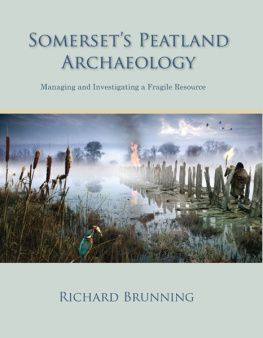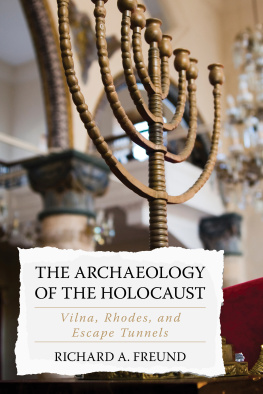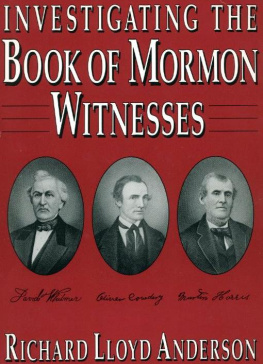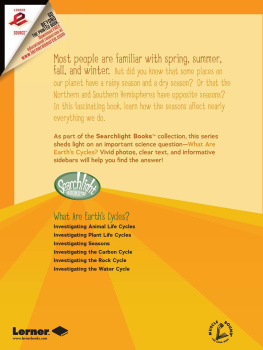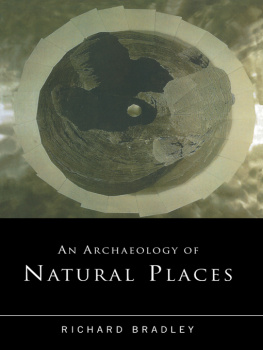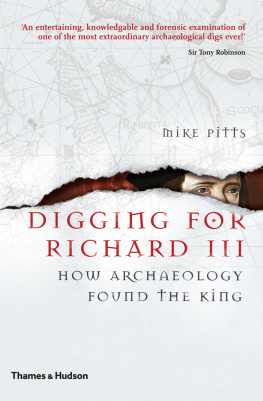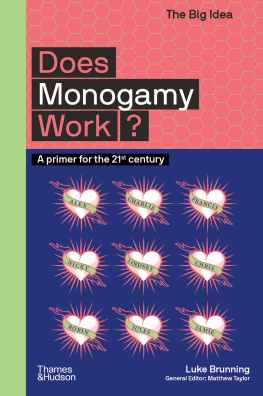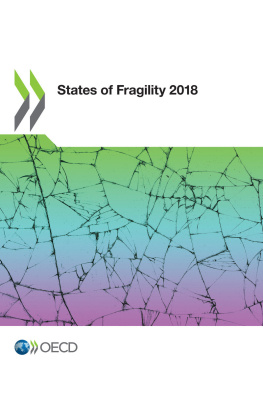Richard Brunning - Somersets Peatland Archaeology. Managing and Investigating a Fragile Resource
Here you can read online Richard Brunning - Somersets Peatland Archaeology. Managing and Investigating a Fragile Resource full text of the book (entire story) in english for free. Download pdf and epub, get meaning, cover and reviews about this ebook. year: 2013, publisher: Casemate Publishers & Book Distributors, LLC, genre: Romance novel. Description of the work, (preface) as well as reviews are available. Best literature library LitArk.com created for fans of good reading and offers a wide selection of genres:
Romance novel
Science fiction
Adventure
Detective
Science
History
Home and family
Prose
Art
Politics
Computer
Non-fiction
Religion
Business
Children
Humor
Choose a favorite category and find really read worthwhile books. Enjoy immersion in the world of imagination, feel the emotions of the characters or learn something new for yourself, make an fascinating discovery.
- Book:Somersets Peatland Archaeology. Managing and Investigating a Fragile Resource
- Author:
- Publisher:Casemate Publishers & Book Distributors, LLC
- Genre:
- Year:2013
- Rating:5 / 5
- Favourites:Add to favourites
- Your mark:
- 100
- 1
- 2
- 3
- 4
- 5
Somersets Peatland Archaeology. Managing and Investigating a Fragile Resource: summary, description and annotation
We offer to read an annotation, description, summary or preface (depends on what the author of the book "Somersets Peatland Archaeology. Managing and Investigating a Fragile Resource" wrote himself). If you haven't found the necessary information about the book — write in the comments, we will try to find it.
Richard Brunning: author's other books
Who wrote Somersets Peatland Archaeology. Managing and Investigating a Fragile Resource? Find out the surname, the name of the author of the book and a list of all author's works by series.
Somersets Peatland Archaeology. Managing and Investigating a Fragile Resource — read online for free the complete book (whole text) full work
Below is the text of the book, divided by pages. System saving the place of the last page read, allows you to conveniently read the book "Somersets Peatland Archaeology. Managing and Investigating a Fragile Resource" online for free, without having to search again every time where you left off. Put a bookmark, and you can go to the page where you finished reading at any time.
Font size:
Interval:
Bookmark:
Published by
Oxbow Books, Oxford, UK
Oxbow Books and the individual authors 2013
ISBN 978-1-84217-488-3
EPUB ISBN: 978-1-78297-066-8
PRC ISBN: 978-1-78297-067-5
A CIP record for this book is available from the British Library
This book is available direct from
Oxbow Books, Oxford, UK
(Phone: 01865-241249; Fax: 01865-794449)
and
The David Brown Book Company
PO Box 511, Oakville, CT 06779, USA
(Phone: 860-945-9329; Fax: 860-945-9468)
or from our website
www.oxbowbooks.com
Library of Congress Cataloging-in-Publication Data
Brunning, Richard. Somersets peatland archaeology : managing and investigating a fragile resource : the results of the
Monuments at Risk in Somerset Peatlands (MARISP) Project / Richard Brunning, Christopher Bronk Ramsey, Nigel
Cameron, Gordon Cook, Paul Davies, Rownea Gale, W. Derek Hamilton, David Hogan, Julie Jones, Mark Jones, Harry
Kenward, Annette Kreiser, Christine Locatelli, Peter Marshall, Vanessa Straker, Heather Tinsley, Cathy Tyers and Ian Tyers.
pages cm
Includes bibliographical references and index.
ISBN 978-1-84217-488-3
1. Somerset (England)--Antiquities. 2. Peatlands--England--Somerset. 3. Monuments--Conservation and restoration-
England--Somerset. 4. Historic sites--Conservation and restoration--England--Somerset. 5. Excavations (Archaeology)-
England--Somerset. 6. Monuments at Risk in Somerset Peatlands Project. I. Title.
DA670.S5B835 2013
936.23801--dc23
2013009161
Printed in Great Britain by
Short Run Press, Exeter
Contents
List of Figures
Appendix 3
Appendix 4
List of Tables
Acknowledgements
Richard Brunning would like to thank the various landowners of the sites examined for their interest and their permission to undertake the work, Gareth Watkins, English Heritage project monitor, for his encouragement and support, the excavation team of James Brigers, Jan Grove, Lorrain Higbee, Keith Faxon and Steve Membery. Peter Marshall for proof reading, Bryony Coles for comments on the first manuscript and Tara Evans of Oxbow Books for bringing the book to publication. Julie Jones and Heather Tinsley are very grateful to Tony Brown for allowing them to read unpublished manuscripts, to Rupert Housley for commenting on the pollen data from Glastonbury Lake and to Vanessa Straker for calibrating radiocarbon dates. Harry Kenward is grateful to Richard Brunning for providing samples and information, and to English Heritage, especially Gill Campbell, for bringing about his involvement in the project.
The Department of the Environment provided the original funding for the analysis of the Meare Heath trackway and Tinneys Ground samples by Ruth Morgan. English Heritage funded Jennifer Hillams re-evaluation of the English prehistoric data that included the Meare Heath trackway and Tinneys Ground material. Dave Brown and Cathy Tyers kindly discussed the various interim results as they occurred, and compared data with other co-eval treering data.
Summary
Waterlogged archaeological remains provide our most complete evidence for past society but in rural peatlands they are being destroyed at a rapid rate. This volume presents the results of a project examining the in situ preservation of nine of the most significant wetland archaeological monuments in the Somerset peat moors. The project was undertaken by Somerset County Council with partnership funding from English Heritage, Somerset County Council and the Environment Agency. All the sites were located on private land. Techniques involved hydrological analysis and condition assessment of wooden remains and palaeoenvironmental evidence. New condition assessment techniques were developed for pollen and plant remains. Excavations to obtain samples also allowed important research questions to be answered about some of the monuments. The project provides a good case study for a cost effective methodology for researching and managing sites in rural wetlands.
The nine sites chosen for assessment included four groups of Neolithic and Bronze Age wooden trackways, a Bronze Age wooden platform, a late Bronze Age ritual pile alignment, two Iron Age wetland settlements and an early medieval stone and wood causeway. The sites of three other late prehistoric wooden trackways were investigated but no structures were located. In one case radiocarbon dating of the peat suggests that the monument had been destroyed by ploughing and consequent peat wastage. This may also be the case with the other two sites, although this was not proven.
Hydrological monitoring demonstrated that all the sites are threatened with seasonal desiccation and consequent monument damage in the summer months when the water table lowers significantly. The most extreme case was the Iron Age Meare Lake Village where the water table was so low throughout the year that wood survival was exceptionally poor. Many of the other monuments were found to be so close to the ground surface that it would be impossible to improve their hydrological setting and also retain them in a farmed regime.
Condition assessments demonstrated great variability between the wood, pollen, plant macrofossil and beetle remains. This was partly due to variations in the original burial environment and partly determined by variable responses to recent changes in that environment.
Small scale excavations to recover samples for assessment were also used to enhance knowledge about the sites. This was especially the case for four sites where detailed palaeoenvironmental analysis took place. These have added considerably to our understanding of changes in the Brue valley floodplain during later prehistory. The causeway between Street and Glastonbury was scientifically dated for the first time to the middle Anglo-Saxon period and its place in wider reclamation and river canalisation at that time is discussed. The excavations of the Harding Alignment at Harters Hill showed how that late Bronze Age ritual pile alignment developed over time. Comparisons with discoveries of similar structures from the same period and comparable environments suggest the existence of a particular class of ritual monument in the UK which shared the same fundamental characteristics.
Recommendations are made for research and management priorities for each of the sites studied. Only a proportion of the sites are likely to survive over the longer term. Climate change over the next century is predicted to make the situation even worse. A landscape scale approach is suggested as the main management objective with the aim to slow down, and ideally stop, peat wastage. Alongside this, site specific measures can be developed to preserve some of the wetland monuments in situ. For other monuments long term preservation is not realistic. The knowledge contained within the waterlogged components of those sites should be extracted to answer research questions
Rsum
Ce sont les vestiges archologiques gorgs deau qui nous fournissent les tmoignages les plus complets des socits du pass mais, dans les tourbires rurales, ils sont dtruits grande vitesse. Ce volume prsente les rsultats dun projet qui a tudi la prservation in situ de neuf des plus importants monuments archologiques en terrain marcageux des landes tourbe du Somerset. Le projet fut entrepris par le Conseil Gnral du Somerset dans le cadre dun partenariat financier entre English Heritage, le Conseil Gnral du Somerset et lAgence pour lEnvironnement. Tous les sites se trouvaient sur des terrains privs. Les techniques comportaient une analyse hydrologique et une valuation de ltat des restes de bois et des indices palo-environnementaux. On a dvelopp de nouvelles techniques pour valuer les restes de pollen et de plantes. Des fouilles pour obtenir des chantillons ont aussi permis de rpondre dimportantes questions de recherches pour certains des monuments. Le projet reprsente une bonne tude de cas pour une mthodologie rentable pour ltude et la gestion des sites de zones humides rurales.
Next pageFont size:
Interval:
Bookmark:
Similar books «Somersets Peatland Archaeology. Managing and Investigating a Fragile Resource»
Look at similar books to Somersets Peatland Archaeology. Managing and Investigating a Fragile Resource. We have selected literature similar in name and meaning in the hope of providing readers with more options to find new, interesting, not yet read works.
Discussion, reviews of the book Somersets Peatland Archaeology. Managing and Investigating a Fragile Resource and just readers' own opinions. Leave your comments, write what you think about the work, its meaning or the main characters. Specify what exactly you liked and what you didn't like, and why you think so.

